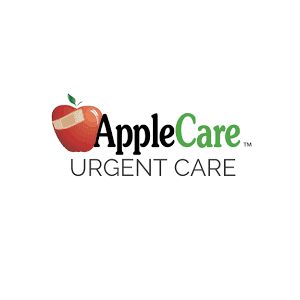
Since 2020, urgent care has been on a roller coaster of patient volume flux. With record-breaking highs, clinics struggle to keep up with demand. And when volume plateaus or drops off, clinics have to figure out how to maintain revenue and keep staff busy. No matter which end of the extreme, managing visit volume is a year-long challenge.
In this catch-all guide, we’ll cover it all: how to fit more patients in when it’s very busy, and how to attract more patients when it is not.
Chapter 1
When your waiting room is packed, you have two challenges: 1) your team is stressed and strained to see as many patients as quickly as possible without burning out, and 2) you could be deterring patients who don’t want to endure the perceived wait.
From the perspective of the patient experience, your services appear slow and unaccommodating — even though you’re working your tails off. Unless your staff and brand experience can win patients over, their impression of your clinic may hurt you in reviews and loss of repeat business. Especially for that person who didn’t even make it through the door.
From a revenue standpoint, if you can see just one more patient a day, that’s 30 extra patients a month. If you make $120 a visit, a single clinic can earn an extra $3600 each month. If you have five clinics, you’re looking at adding over $200,000 a year.
Therefore, improving patient flow to decrease door-to-door time will benefit both patients and the clinic. Here are some ways to make that happen at various points of the patient journey.
Patient engagement (PE) technology creates a digital front door — offering patients the ability to get in line, preregister, and track their place in line before setting foot in your clinic. This gives patients a better experience and helps staff be more efficient. Here is a snapshot of how PE tech helps manage high visit volume:
Hiring scribes can significantly speed up your process. Dr. Chirag Patel, CMO of Central Jersey Urgent Care, stated in an Experity webinar that his scribes increase productivity of clinicians by up to 25 percent. Scribes empower the speed of an EMR and give providers more time to spend with patients.
While PE technology makes a huge impact on patient flow, your EMR should also be saving you steps. But it is most efficient when it is built specifically for urgent care and integrates with your PE and other technology. An EMR that supports the nuances of urgent care will truly help you:
Spend more time with patients — which is what matters the most for any clinic


Verification for the most part has a quick turnaround time, and this has been an easy system for me to train new hires on.
Chapter 2
Providing additional services can add and increase new revenue streams by creating a steady source of new patients — and increase the likelihood that your new patients return for other on-demand services. With the way that patient behaviors and expectations are changing, now is the perfect time to consider expanding services through Occupational Medicine (OccMed) or primary care.
Since primary care is a more complex addition to your services, we’ll keep it simple and just focus on OccMed in this guide.
OccMed is a good fit for urgent care. Extended hours, quick door-to-door time, and easy accessibility are keys to a successful OccMed practice — and those things are innate to urgent care. OccMed covers services that employers need for hiring and compliance — like drug screening, physicals, and workers compensation injury care. It can also include onsite COVID-19 testing and vaccinations. Bringing employees back into the office increased the need for OccMed services both in clinic and on-site. No matter where your practice is located, you can find an industry that needs these services. For example:
OccMed equals flexibility. You can offer some services or all. You can provide them at your clinic, onsite, or even remotely. But what makes it so easy to add this to your docket is that there is very little overhead in doing so. With cross-training, you can use your current staff and facility, so your primary costs will revolve around marketing. But remember: your OccMed services are also a way to advertise your urgent care services. Give those employees a great patient experience, and they’ll remember you for non-work-related healthcare needs.
While your clinic is not set up as an actual primary care clinic, many patients today don’t have a primary care physician. They will expect some of the same services when they visit your urgent care. Like OccMed, offering some primary care services is an opportunity to expand your business to accommodate chronic problem management, vaccinations, check-ups, and specialty visits like sports physicals, with little to no overhead on your end.
To be successful when operating a hybrid urgent care clinic including primary care services, it’s important that you have a single, streamlined platform that allows you to provide longitudinal care alongside episodic care. Be sure you can access a consolidated view of the patient’s active problems and summaries from previous visits and document on chronic problems. Using face sheet can provide a high-level patient history overview of vitals, current medications, and family and social history.
When treating repeat patients for chronic problems, it’s important to track and access previous values such as lab history, height and weight, and growth charts and keep them current in the medical record. With the right information on file, you can ensure patients get appropriate, quality care.
Add value for your patients at the end of a visit by ensuring you have the tools to order, schedule, manage, and follow up on referrals to your partners and specialists in your area — a service traditionally provided by primary care physicians.
By getting involved in your community and investing time in outreach efforts, you can build a customer base. As for the services, you can offer some services in person, and some via telehealth to broaden your reach even further.
There are some great tips on how to approach OccMed in our emerging trends webinar. We also have The Giant eBook for Adding OccMed to Your Urgent Care available for download.
Chapter 3
Traditional marketing is still relevant to today’s patients, but to reach the most people, you must invest in your digital marketing strategy. If it’s been months or longer since you touched your online presence, these channels can help you get in front of — and attract — more patients.
The best strategy is to routinely optimize the customer journey and boost your rank for search engine optimization (SEO.) Create a long-term program to add pages for higher SEO visibility. This is both about adding functionality (access to patient queues, bill pay, explanation of services, etc.) and expansive keyword matches (through blogs.)
SEO is a big topic, so if you need help, get information on how to succeed at SEO in this blog.
Supplement your organic traffic with paid ads like Google AdWords and social media advertising. You can be specific about who sees your ads, like those within a geographic range. Target keywords that you don’t already rank on page one for organically. This will not only put you at the top of the page, but put you top of mind. We explain some ideas for paid ad campaigns in the next chapter.
Local listings, particularly Google My Business (GMB), are where you accumulate reviews. Most consumers use reviews to make choices. Naturally, the greater quantity and positivity of your reviews, the better your Google ranking, and the more likely you are to get new business opportunities. You can help build online reviews with post-visit surveys. (Explained in the next chapter.) A couple of things to remember about your reviews:
For more about urgent care marketing in general, refer to our guide How to Market Your Urgent Care.
Chapter 4
According to Experity data, 50% more new patients visited urgent care clinics in 2020 than in previous years. And visit volume in 2021 surpassed the record-breaking numbers in 2020. This is your opportunity to leverage your PE technology and patient data to communicate special offers, services, and other reasons patients should come back.
Email marketing is a powerful tool to stay connected with those new patients you acquired and welcome them back. Tell people about a new or existing service they may not know you provide. Remind them of annual physicals. Show them a blog that can help them with self-care. These help you continue your relationship and stay top of mind for their next urgent care need.
One VERY important opportunity to remember when you set up email campaigns: younger generations generally don’t have a primary care doctor. If you can fill in some of those blanks, market your services and why they’re important. Keep those Millennials and Gen Z’s coming back to you — for things like physicals, flu shots, x-rays, vaccinations, pregnancy tests, STD testing and treatment, etc. — even if you don’t offer true primary care.
To understand what goes into email marketing, read our Marketing 101 guide.
You should always engage with patients right after a visit. That PE solution that helped you before the patient reached the clinic can help you after they leave, too. By sending a survey via text or email, you create a direct line for feedback. This gives you the opportunity to not only improve, but also rectify any situation that could otherwise lead to a bad review. You can also use the survey as an opportunity to get more online reviews. Include a link to your GMB page and ask them to write one. There is even technology available that will prompt a review request at the end of a positive survey and direct the patient to a specific contact if the survey responses are not so hot.
You can make exceptional use of your paid ads by promoting special offers with engaging headlines. In our webinar on emerging trends in urgent care, Claudio Varga, Director of Operations at Vital Urgent Care in Newport Beach, California, shared that their big promotional offers get a lot of attention. “I’m a big believer that if you’re going to do a promotion, go big or go home. Don’t do something like our TB tests are 40 dollars, and we’re going to do them for 30. No. We’re going to do them for five bucks.”
Vital Urgent Care was able reach both new and existing patients with pay-per-click campaigns. “Right in the headline, you can say ‘TB Test Five Dollars’…and people would call in and say, ‘is that true, are you really doing them for five dollars?’ Yeah! Come on in; here’s our address!”
Consider the needs of your community at the time of year you want to run a promotion. Back to school, flu season, spring break, and even a new business providing employment all create different opportunities to bring people in. Pinpoint the need and make your offer a no-brainer.
Chapter 5
As you depend on tools to help you navigate the highs and lows of patient volume, you shouldn’t feel like you’re in it alone. Your vendors should understand what you need to succeed, not just as a healthcare provider, but as an on-demand consumer service.
Experity is dedicated to urgent care. We understand your challenges, and we know how important you are to your communities. That’s why we built a fully integrated solution that clears your bottlenecks and helps you deliver exceptional patient care. But we aren’t just a technology provider. We partner with you to ensure you have what you need to thrive — because we measure our success on your success.
If you’re ready to be better equipped to grow, visit our solution page. Get to know us through the two-minute video, and explore our resources. If you like what you see, we would love to talk to you.
